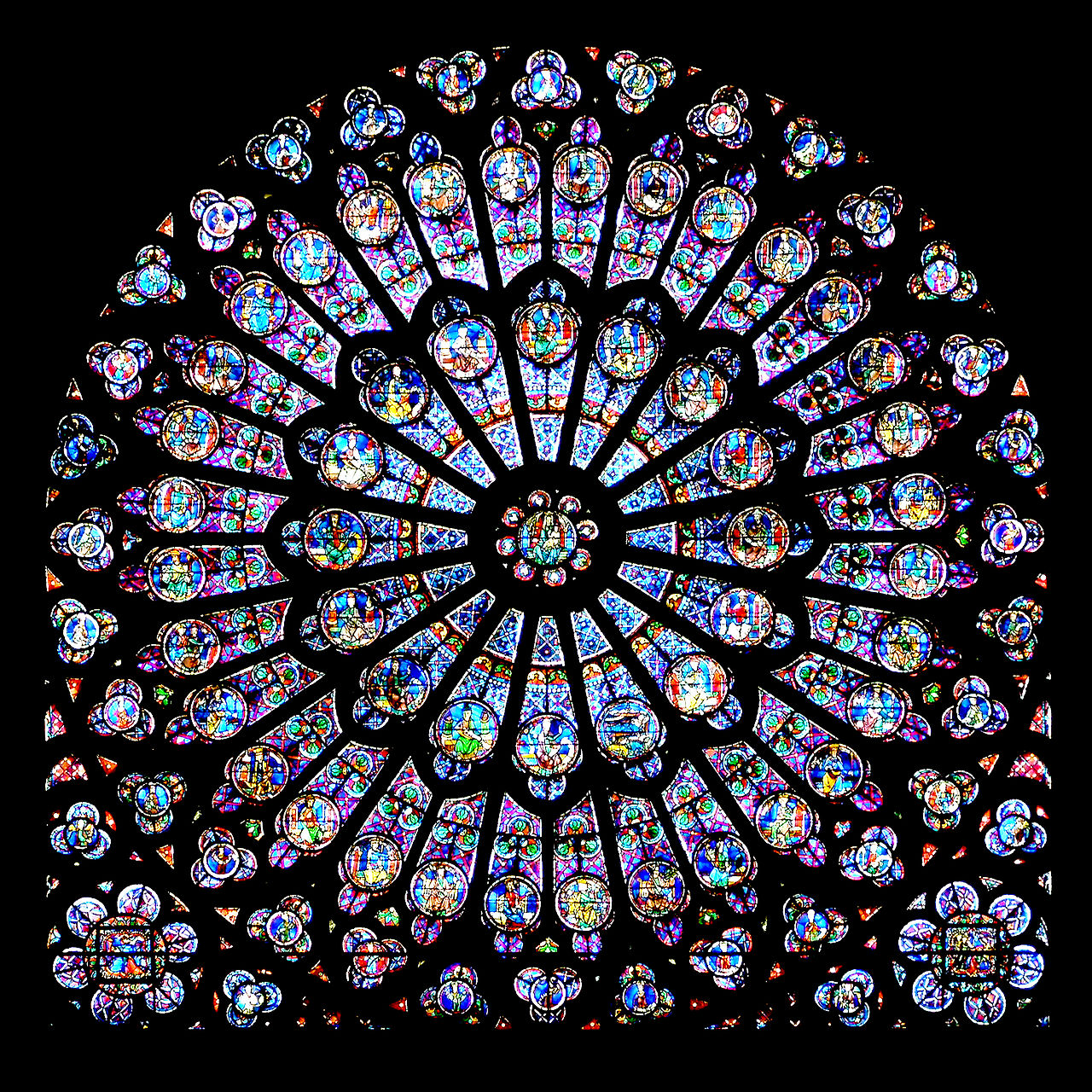 In the almost 7 years since I began Matrignosis, I’ve written much more about depth psychology than what I would call ‘depth spirituality.’ Perhaps because I’ve been doing in-depth studies of Jungian psychology for 27 years and feel more comfortable about my knowledge and experience of it. Perhaps because I have no formal credentials on the subject of religion and so have left writing about it to those who do.
In the almost 7 years since I began Matrignosis, I’ve written much more about depth psychology than what I would call ‘depth spirituality.’ Perhaps because I’ve been doing in-depth studies of Jungian psychology for 27 years and feel more comfortable about my knowledge and experience of it. Perhaps because I have no formal credentials on the subject of religion and so have left writing about it to those who do.
Either way, I’ve only hinted at depth spirituality and its connection to depth psychology, shared a few meaningful religious experiences, and occasionally addressed mysticism and religion. Yet, depth spirituality is a passion of mine and I’m feeling compelled to write more about it. So here goes.
I’ve been deeply spiritual since the age of 17 when I experienced an epiphany about some Bible verses and eagerly answered an altar call at a Billy Graham Crusade shortly afterwards. Perhaps it started before that, when, at the age of 10, I was encouraged by my Baptist paternal grandmother to kneel beside my bed and invite Jesus into my heart. Or did it happen a few months later when my minister immersed me in the baptismal font at the First Christian Church we attended?
Maybe my spiritual spark ignited when, around the age of 5, I experienced awe and wonder on a walk with my father beneath the cathedral-like canopy of a forest? Or was it earlier still at age 3 when I was lost and alone on the shores of Lake Michigan, following a faraway light that twinkled through the darkness like a star?
Regardless of when it awakened, I know for certain it didn’t begin to deepen until midlife. That’s when I experienced a crisis of faith which caused painful internal conflicts between known and previously unknown parts of myself. Gradually, taking these conflicts seriously and exploring them over a long period of time transformed my old God image of a distant and aloof heavenly father into a sacred, genderless, benevolent force which was real, present, and life-changing.
Carl Jung, whose father was a minister, experienced a similar crisis which activated the same compulsion to understand himself and participate in the Mystery of life. He called this compulsion the ‘transcendent function.’
The cooperation of conscious reasoning with the data of the unconscious is called the ‘transcendent function’…. This function progressively unites the opposites. Psychotherapy makes use of it to heal neurotic dissociations, but this function had already served as the basis of Hermetic philosophy for seventeen centuries. ~Carl Jung, CW 18, par. 1554.
In fact, people have been encountering the transcendent function for thousands of years. Here’s what happens. Consciousness is born when we become self-aware: when we see ourselves objectively and realize we can make original choices instead of conforming and being buffeted about by unknown forces. We start out believing these forces are outside of us, in nature, other people, gods. We grow by acknowledging that they are in us, and that we project them outward to avoid taking responsibility for who we really are.
It is we who create our religions, our cultural standards, our wars, our beliefs about right and wrong, good and bad. This good/bad opposition is the source of our internal and external conflicts. We have no control over the transcendent function or when—or if—it kicks in. But if and when it does, everything changes.
The transcendent function does not proceed without aim and purpose, but leads to the revelation of the essential man. It is in the first place a purely natural process, which may in some cases pursue its course without the knowledge or assistance of the individual, and can sometimes forcibly accomplish itself in the face of opposition. The meaning and purpose of the process is the realization, in all its aspects, of the personality originally hidden away in the embryonic germ-plasm; the production and unfolding of the original, potential wholeness. ~Carl Jung, CW 11, par. 780.
Self-discovery is the basis of Eastern religions like Buddhism and Taoism and the mystical traditions of Judaism, Christianity and Islam. Some practices that lead to self-discovery are introspection, meditation, contemplation, centering prayer, dreamwork, body work, active imagination, journaling, psychotherapy, art, and so on.
Our choice to explore our unconscious selves is where East meets West and Soul meets Spirit. Working together in partnership toward understanding, union and love, our divided selves can eventually merge into One. This transforming process is both depth psychology and depth spirituality. It is where Life wants to take us.
By means of the transcendent function we not only gain access to the ‘One Mind’ but also come to understand why the East believes in the possibility of self-liberation. If, through introspection and the conscious realization of unconscious compensations, it is possible to transform one’s mental condition and thus arrive at a solution of painful conflicts, one would seem entitled to speak of ‘self-liberation’. ~Carl Jung, CW 11, par. 784.



19 Responses
Reblogged this on lampmagician.
Thank you, Alaedin.
And I thank you as always for your Wonderful Works ❤
Wow! I am going to bookmark this post of yours and share a dream I awoke to this morning for when I see you when I’m in Florida, Jeanie. I have experienced three meaningful coincidences having to do with the dream so far, this blog post being one of them. Well, said my friend, and so true: “This transforming process is both depth psychology and depth spirituality. It is where Life wants to take us…” Much love, Jenna
I can’t wait to hear your dream and the synchronicities circumambulating around it! I love it that we are connected in this way…….that we are ALL connected in this way. Let me know when you’ll be in FL asap so we can find time to meet and I can get it on my calendar….which is filling in fast now that my restful holiday is over. Too fast. Much love to you too, Jenna! Jeanie
Thank you Jeanie – your post fills me with hope that union is possible and that the separation we’ve laboured under so long will become a thing of the past. Imagine an awakening to the illusion of separation and slowly stripping it away to reveal the treasures –
‘Imagine an awakening to the illusion of separation and slowly stripping it away to reveal the treasures –’ A hopeful and healing image, indeed.
Dear Jeanie, Thank you for this wonderfully clear article on the transcendent function. In reading, many childhood memories stirred, in particular discovering my first crop circles in the fields that surrounded our cottage. I remember walking through astonished by perfect circles of neatly laid down crop, and recall my dog’s terror as I struggled to pull her into one of the circles. She just wouldn’t enter the space, ever, it was extraordinary! I think I was around five years old at the time.
I feel my own awakening began in 2009 when I first attended a women’s (Jungian) Dream Group, and met Carl Jung for the second time in my life, and boy was I ready this time! One of the first things I noticed about myself, as my studies began, was a deepening of my connection to nature. Quite simply, I began to fall in love with the land, all land, and the trees, and animals and would walk for miles up and down mountains, and through many forests, soaking up the beauty of it all.
In my latest poem ‘Land of the Smoking Fire’ I explore our relationship with the Divine and realise that, it is only the shepherd in the vast solitude of the savannahs, who pays attention to the Soul, faraway from the insanity of our world, where we forget to give thanks for what we receive. Poetry is one of my favourite practices to helps me get in touch with the transcendent function, where ‘East meets West and Soul meets Spirit’ … that’s so beautifully expressed! Blessings, Deborah.
Hi Deborah,
Thanks for these excellent examples of your awakenings. Immersing myself in Nature and trying to write poetry are particularly helpful practices for me as well. And so is music, especially practicing and playing my ukulele. And writing. And working on my dreams. These activities never fail to absorb my attention, lighten my mood, warm my heart, and activate appreciation and my instinct for creativity. In fact, I think the transcendent function must be very closely tied to, and perhaps even dependent on, the instinct for creativity. Hmmmm…..something to think about and a potential topic for a future post.
Thank you for writing. New Year blessings, Jeanie
Happy New Year, Jeanie! Matrignosis just keeps getting better and better, richer and richer, deeper and deeper. What a profoundly wonderful resource it is for those willing to take the time to explore it. It makes me think of Dr. Jung’s Collected Works, and how they were preserved. Just imagine if Dr. Jung was a blogger. Yikes, what a thought!
Happy New Year, Skip. I appreciate your kind words and thoughts about Matrignosis very much. It would, indeed, be an extraordinary gift to the world if Dr. Jung had been a blogger!! To think that my blog made you think of that is humbling beyond words. My sincere thanks. Jeanie
Wonderful Jeanie. I look forward to more adventures in Transcendence. Your post fills me with hope and reminds me I have a lifetime of study and inner resources to help deal with the outer world.
I imagine Jung would say you’re at the perfect time in the life cycle to write about the Transcendent Function. It takes maturity to integrate experiences of transcendence as my spiritual teacher Anthony Damiani realized when teaching philosophy to stoned hippies in 1967. We loved “transcendence”–or the smoke and mirrors we were experiencing. He convinced us to meditate and read Jung and study. Life became serious then. No more hippie shortcuts to the Higher.
I’m having a twitter discussion with a few of your favorite readers about synchronicity, so was interested in Jenna’s comment.
How lucky you were to study with such a great teacher who had actually experienced what he taught! Despite the adulation it inspires in our culture, youth is handicapped in so many ways, and the lack of wisdom that comes from experience is definitely one of them!! There were many times in my youth when I thought, “Oh wow! I think I’m almost there!” Now I know there is no “There.” There’s only “Here.” And “now.”
Yes, good fortune. You mean I’m not almost there despite an early start? Damn. I was afraid of that. Thanks again for this inspiring post.
🙂
I am LOL to Elaine’s last comment! Just this morning I had a conversation with Deb about whether we’d achieved Enlightenment, but then I realized I couldn’t get there with my bum knee … (;-)
Hahahahaha!! I wish I knew what enlightenment is. If it’s a conscious, consistent, ongoing process of trying to understand, individuate, love, realize our true selves, and appreciate the miracle of our lives, then, perhaps all of us who do this kind of work could be considered such. I mean, we know we’re part of a process, and we’re consciously involved in it. But if enlightenment is not a process, but an end-product, then I know I’m not “there.” I keep re-hashing old stuff and coming up with new stuff to process, so in this definition, I’m only as “enlightened” as my thoughts, behavior, and motivations are in this very moment!
Thanks for this ‘enlightening’ comment. I feel like this is a topic I need to address in a future post. Maybe next week……
It seems you’re already on the path, because the quote of Dr. Jung at the end of this piece really covers Deb’s Buddhist cut on this, which was “when you escape all illusion and delusion.” To paraphrase your quote, ” If…it is possible to transform one’s mental condition and thus arrive at a solution of painful conflicts, one would seem entitled to speak of ‘self-liberation’.” I’m not sure that’s quite IT, but it’s a start. You set off quite a flurry of activity in preparing for my Monday night group, since the letter to M. Zarine of 3 May 1939, which is partially quoted in Lewis’s meme above, also has a very interesting comment on “the temptation of Christ,” because it puts it within a psychological context of exactly which devil Christ was fighting in the wilderness. CGJ, Letters Vol. I, Pp. 267-69.
I’m familiar with the “release from delusion” goal of Buddhism. As I recall from reading Joseph Campbell, there are three others as well. I can’t call them to mind at the moment, but I’ll check them out. Maybe they’ll work in my next post! Meanwhile, I keep finding new aspects of my shadow so I’m pretty sure I’m not released from all delusion. I’m not deluded by thinking I don’t have a shadow, but I know it holds secrets I have yet to discover!! Good luck with your Monday night group. I’ve been able to watch a few and am enjoying them. Excellent work!